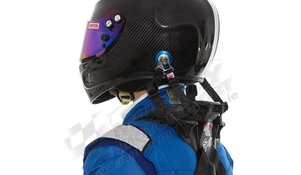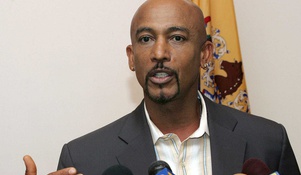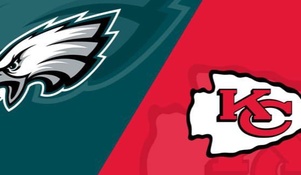MTBI was the Centerpiece of the NFL Concussion Litigation

In the most recent appeal of the NFL Concussion Settlement, filed by 9 former players, they argue that the “centerpiece” of the litigation was the condition known as Chronic Traumatic Encephalopathy. They claim that our “Class Counsel used CTE's scientific infancy against the class members by arguing that, because Plaintiffs could not prevail on a litigated CTE claim since the science was too new, it was fair to release the claims for no consideration (while obtaining consideration for other, more well-defined diseases). In conclusion they say that the District Court and the Court of Appeals Panel then adopted this reasoning without considering the more fundamental implication that, if the claims for CTE would fail for lack of scientific and medical development and understanding, then they do not exist for purposes of Article III.”
If you didn't know what Article III is, join the crowd. It's legal jargon for addressing whether we had standing to invoke the jurisdiction of the federal court in the first place. It requires that plaintiffs demonstrate three things: injury-in-fact, that the injury in question is fairly traceable to the defendant's challenged action, and that the injury is one that could be redressed by a favorable decision.
Additionally, a rehearing by the entire Third Circuit Court "en banc" is reserved only for situations where a case involves a new issue of law or is one where the court has not properly understood or stated the law. There is nothing in this case that involved a new issue of law, or any indication that the judges misstated the applicable law. At the end of the day the objectors' complaint is that the court did not apply the law in their favor, which is not grounds to petition for rehearing en banc.
So now that we have all that legal stuff out of the way, let me explain why I believe the nine players are incorrect on several of the arguments in their appeal.
When former NFL players began to sue the NFL, the main focus of ALL the complaints were centered around the fact that former NFL players were injured as a result of both traumatic and “mild” traumatic brain injuries or MTBI (Mild Traumatic Brain Injury). Cases were being filed all over the U.S. and ultimately around 5,000 lawsuits were consolidated into what is known as a Multi-District Litigation Master Administrative Long Form Complaint.
In the Master Complaint, there were 24 introductory statements as to why former players were suing the NFL. The acronym MTBI is used 24 times and the acronym for CTE is not used even once! Altogether, MTBI is referred to 127 times in the full complaint.
According to the complaint:
“This action arises from the pathological and debilitating effects of mild traumatic brain injuries (referenced herein as “MTBI”) caused by the concussive and sub-concussive impacts that have afflicted former professional football players in the NFL. For many decades, evidence has linked repetitive MTBI to long-term neurological problems in many sports, including football. The NFL, as the organizer, marketer, and face of the most popular sport in the United States, in which MTBI is a regular occurrence and in which players are at risk for MTBI, was aware of the evidence and the risks associated with repetitive traumatic brain injuries virtually at the inception, but deliberately ignored and actively concealed the information from the Plaintiffs and all others who participated in organized football at all levels.”
As you can see, there is no mention of CTE in the introduction to the complaint. And why is that important? There are several reasons, but first and foremost, our lawyers had to establish that players were actually “injured”, which is a requirement of Article III. Our lawyers couldn’t establish that players had CTE as a specific injury because there was no way to detect CTE in living players. It could only be diagnosed post-mortem. Players that died with CTE before the Settlement was approved, did not have an opportunity to get a "qualifying diagnosis" for their cognitive impairment, so our attorneys negotiated a special award for any player that died and had a post-mortem diagnosis of CTE between 2006 and the April 22, 2015.
The most important thing to know is that, even though CTE is mentioned in the complaint, it was not the “centerpiece” of our litigation and it was not the main reason we sued the NFL! Nonetheless, there was plenty of evidence, going all the way back to 1928, that supported the fact that players were being injured due to concussive and sub-concussive blows to the head, or MTBI.
The NFL knew that they had to do something about the concussion problem, so they established the MTBI Committee in 1994. The establishment of that Committee was also central to our case and it was mentioned numerous times in our complaint. We alleged that the NFL’s MTBI Committee was established and that after they “voluntarily assumed the duty to investigate, study, and truthfully report the medical risks associated with MTBI in football, the NFL produced industry-funded, biased, and falsified research that claimed that concussive and sub-concussive head impacts in football do not present serious, life-altering risks.”
As with most lawsuits, there are a number of allegations made against defendants (like the ones above). But, proving all of those allegations in a court of law is not an easy thing to do and that’s why Settlements are negotiated and approved by the Courts. Both sides realize it could take years to resolve a case. That, along with the uncertainty of winning or losing, is why you usually keep the bird in hand instead of going for the two in the bush. The issue of Preemption was also looming large, so Judge Brody asked the parties to see if they could come to an agreement before she made her ruling on that key issue.
In Settlement negotiations, we had to make a compromise over the issue of CTE, due to the fact that scientific evidence was in its infancy. After months of negotiations, our lawyers realized we would have a very difficult time getting that specific disease covered as a compensable injury for living players. Although, I should note that the Settlement does compensate players for the memory and executive functioning problems that are associated with CTE and will provide awards to players that have level 1.5 or level 2 cognitive impairments – the precursors to Alzheimer’s Disease.
The nine players that have appealed the Settlement said “There are no ripe Article III claims for CTE among living NFL retirees.” They’re correct! No former player has tried to sue the NFL using CTE as the centerpiece of their case. And why is that? Because, if they had used the current scientific evidence on CTE, they would have lost their case so badly they would look like pee wee football players going up against NFL players.
According to the nine players that have appealed the Settlement, we should have waited until the CTE issue was “mature” and had already been litigated in the lower courts. They refer to one case where the District Court said "Fairness may demand that mass torts with few prior verdicts or judgments be litigated first in smaller units even single-plaintiff, single-defendant trials until general causation, typical injuries, and levels of damages become established.”
If the nine former players have their way, our Class Action Settlement could be thrown out of court and not heard for another five or ten years – when CTE is potentially "ripe" and "mature" for being included in the Settlement. But that’s only if the lower courts were to rule that CTE is a legitimate “injury-in-fact” and that according to Article III, the injury is fairly traceable to the defendant's challenged action. In other words, we would have to prove that the NFL caused CTE, due to their fraud and negligence. The problem is, the NFL - and no one else for that matter - had ever seen CTE in an NFL player before Dr. Omalu found it in Mike Webster's brain in 2002. The NFL can't be found negligent for the thousands of players that supposedly had CTE before that 2002 date and that's another reason why MTBI and not CTE was the centerpiece of our complaint.
Thankfully, we already had research and prior court cases that established that MTBI and concussions lead to serious injuries. Mike Webster’s case is a perfect precedent. He was diagnosed with MTBI way before CTE was found in his autopsy and became a household word. The good news is, we don't have show the court that we have CTE – only that we suffered from the cognitive impairments associated with ramming our heads into other players.
Our lawyers could have taken CTE out of our complaint – as the nine players suggest in their filing - and we still would have had a strong case, because MTBI was the “centerpiece” of our litigation. Of course, taking CTE out of our complaint would have weakened our overall case and it would have taken away a key part of our leverage during the negotiation process.
The nine former players go on to say that "Class members who have yet to be diagnosed with a concussion related disease have suffered no injury caused by the NFL, and therefore cannot allege a claim for damages at this time. They lack Article III standing to sue the NFL, and therefore may not be included in a settlement class"
Wow, it sounds like that part of their argument was written directly by the NFL lawyers! But it's not true. All of the initial lawsuits filed by former players included language that explained how we were currently suffering from the effects of mild traumatic brain injuries and concussions. Some players had more serious injuries than others, but all of us claimed some type of impairment. It could be argued that all former NFL players have some degree of brain damage and the research shows that our impairments are likely to get worse. Level 1.5 and level 2 dementia, which is included in the monetary awards, is not a specific disease. It's an overall term that describes a wide range of symptoms associated with a decline in memory, or other thinking skills severe enough to reduce a person's ability to perform everyday activities.
For the nine former players to suggest that any class member that doesn't already have a "concussion related disease" should not be included in this Settlement is a downright disgrace and I hope the Third Court of Appeals punts that assertion right out of the stadium.
The nine former players that have appealed to the entire Third Circuit Court are holding up the Settlement, just like the 94 other former players did when they appealed the Settlement. Former players have been delayed and denied - and some have died - while waiting to get compensated under a good Settlement. It's not a perfect one, but it is one that 20,000 other former players have already agreed to. If former players didn't like the Settlement, all they had to do was opt out and continue their lawsuits against the NFL, just like 200 of our alumni brothers did - at great risk to themselves. If the nine players had opted out, they could have filed all the lawsuits they wanted, using CTE as the centerpiece of their litigation. They could have fought to get all the symptoms associated with CTE included in their award for damages.
I wish it were different. I wish we had conclusive evidence about CTE right now. I wish the science was more advanced. I wish I had a genie from a magic lantern so I could wish for a thousand wishes - and each one would be for former players to get compensated for the injuries allegedly associated with CTE. But that’s a fantasy……… and so is the Naughty 9's appeal to the entire Third Circuit Court.
It's time to stop all the appeals, put this baby to bed, and let the provisions of the Settlement go into effect. Let's get money into the pockets of former players and in some cases, the families they have left behind. We also need to get the medical monitoring and the education fund implemented as soon as possible. None of that will happen until the appeals have been exhausted.
To tell you the truth, I'm exhausted from writing about this issue - and I know there are a lot of former players that are exhausted from reading about the concussion litigation and settlement. I can't wait for the day when I can just sit back and look at this in my review mirror. I'm still going to advocate for all the things that former players need - the most important being the bearer of good information that can help former players - help themselves.
Let me leave you with some good information I found at a blog called the Foggy Shore. The most recent article posted there is entitled: 10 Things I Wish My Doctor Had Told Me About Mild Traumatic Brain Injury (mTBI). There's some really good advice that many of us can use to help us navigate through the Fog.
Your alumni brother,
Jeff Nixon






